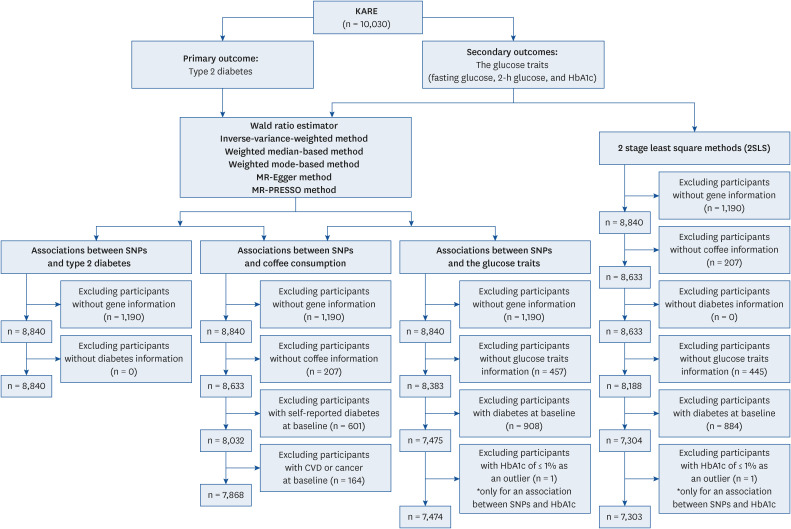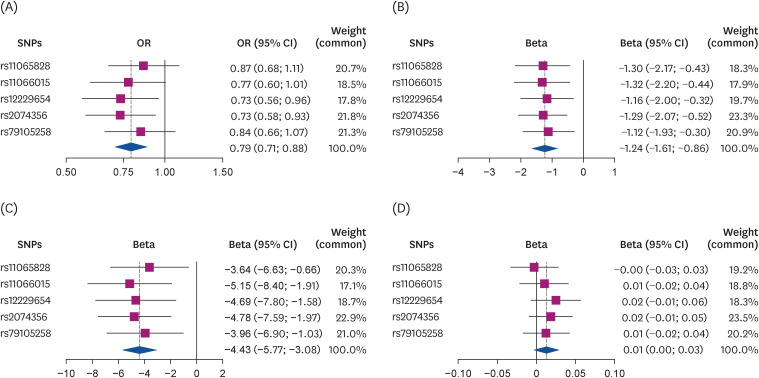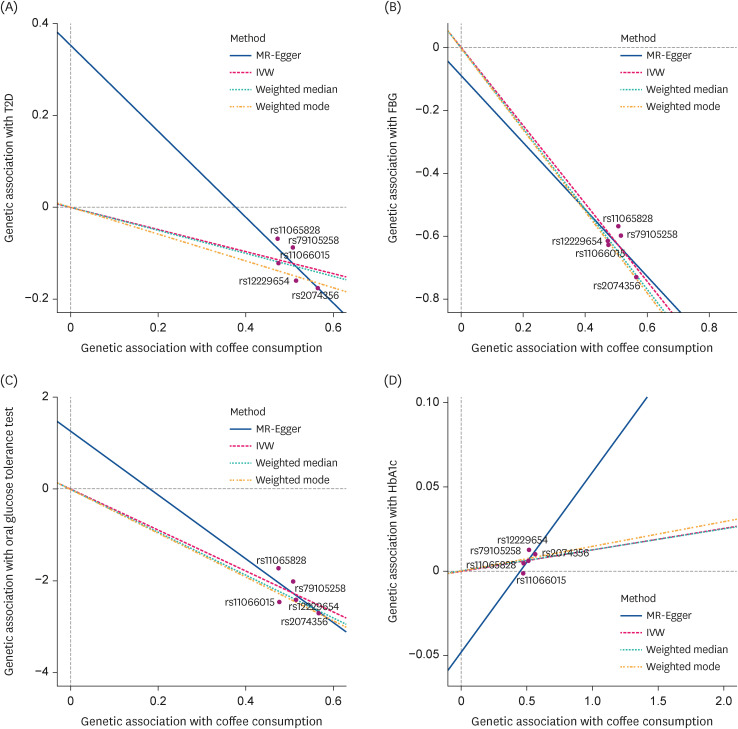1. Saeedi P, Petersohn I, Salpea P, Malanda B, Karuranga S, Unwin N, Colagiuri S, Guariguata L, Motala AA, Ogurtsova K, et al. Global and regional diabetes prevalence estimates for 2019 and projections for 2030 and 2045: results from the International Diabetes Federation Diabetes Atlas, 9th edition. Diabetes Res Clin Pract. 2019; 157:107843. PMID:
31518657.

2. Lin X, Xu Y, Pan X, Xu J, Ding Y, Sun X, Song X, Ren Y, Shan PF. Global, regional, and national burden and trend of diabetes in 195 countries and territories: an analysis from 1990 to 2025. Sci Rep. 2020; 10:14790. PMID:
32901098.

3. Bommer C, Sagalova V, Heesemann E, Manne-Goehler J, Atun R, Bärnighausen T, Davies J, Vollmer S. Global economic burden of diabetes in adults: projections from 2015 to 2030. Diabetes Care. 2018; 41:963–970. PMID:
29475843.

4. Cousin E, Duncan BB, Stein C, Ong KL, Vos T, Abbafati C, Abbasi-Kangevari M, Abdelmasseh M, Abdoli A, Abd-Rabu R, et al. Diabetes mortality and trends before 25 years of age: an analysis of the Global Burden of Disease Study 2019. Lancet Diabetes Endocrinol. 2022; 10:177–192. PMID:
35143780.
5. Jiang X, Zhang D, Jiang W. Coffee and caffeine intake and incidence of type 2 diabetes mellitus: a meta-analysis of prospective studies. Eur J Nutr. 2014; 53:25–38. PMID:
24150256.

6. Bhupathiraju SN, Pan A, Manson JE, Willett WC, van Dam RM, Hu FB. Changes in coffee intake and subsequent risk of type 2 diabetes: three large cohorts of US men and women. Diabetologia. 2014; 57:1346–1354. PMID:
24771089.

7. Kim Y, Je Y, Giovannucci E. Coffee consumption and all-cause and cause-specific mortality: a meta-analysis by potential modifiers. Eur J Epidemiol. 2019; 34:731–752. PMID:
31055709.

8. Cho HJ, Yoo JY, Kim AN, Moon S, Choi J, Kim I, Ko KP, Lee JE, Park SK. Association of coffee drinking with all-cause and cause-specific mortality in over 190,000 individuals: data from two prospective studies. Int J Food Sci Nutr. 2022; 73:513–521. PMID:
34779701.

9. Alperet DJ, Rebello SA, Khoo EY, Tay Z, Seah SS, Tai BC, Emady-Azar S, Chou CJ, Darimont C, van Dam RM. A randomized placebo-controlled trial of the effect of coffee consumption on insulin sensitivity: Design and baseline characteristics of the Coffee for METabolic Health (COMETH) study. Contemp Clin Trials Commun. 2016; 4:105–117. PMID:
29736473.

10. Ohnaka K, Ikeda M, Maki T, Okada T, Shimazoe T, Adachi M, Nomura M, Takayanagi R, Kono S. Effects of 16-week consumption of caffeinated and decaffeinated instant coffee on glucose metabolism in a randomized controlled trial. J Nutr Metab. 2012; 2012:207426. PMID:
23193459.

11. Alperet DJ, Rebello SA, Khoo EY, Tay Z, Seah SS, Tai BC, Tai ES, Emady-Azar S, Chou CJ, Darimont C, et al. The effect of coffee consumption on insulin sensitivity and other biological risk factors for type 2 diabetes: a randomized placebo-controlled trial. Am J Clin Nutr. 2019; 111:448–458.

12. Kempf K, Herder C, Erlund I, Kolb H, Martin S, Carstensen M, Koenig W, Sundvall J, Bidel S, Kuha S, et al. Effects of coffee consumption on subclinical inflammation and other risk factors for type 2 diabetes: a clinical trial. Am J Clin Nutr. 2010; 91:950–957. PMID:
20181814.

13. Lawlor DA, Harbord RM, Sterne JA, Timpson N, Davey Smith G. Mendelian randomization: Using genes as instruments for making causal inferences in epidemiology. Stat Med. 2008; 27:1133–1163. PMID:
17886233.

14. Burgess S, Butterworth A, Thompson SG. Mendelian randomization analysis with multiple genetic variants using summarized data. Genet Epidemiol. 2013; 37:658–665. PMID:
24114802.

15. Qian Y, Ye D, Huang H, Wu DJ, Zhuang Y, Jiang X, Mao Y. Coffee consumption and risk of stroke: a Mendelian randomization study. Ann Neurol. 2020; 87:525–532. PMID:
32034791.

16. Wang X, Jia J, Huang T. Coffee types and type 2 diabetes mellitus: large-scale cross-phenotype association study and Mendelian randomization analysis. Front Endocrinol (Lausanne). 2022; 13:818831. PMID:
35222278.

17. Kim AN, Cho HJ, Youn J, Jin T, Kang M, Sung J, Lee JE. Coffee consumption, genetic polymorphisms, and the risk of type 2 diabetes mellitus: a pooled analysis of four prospective cohort studies. Int J Environ Res Public Health. 2020; 17:5379. PMID:
32722593.

18. DIAbetes Genetics Replication And Meta-analysis (DIAGRAM) Consortium. Asian Genetic Epidemiology Network Type 2 Diabetes (AGEN-T2D) Consortium. South Asian Type 2 Diabetes (SAT2D) Consortium. Mexican American Type 2 Diabetes (MAT2D) Consortium. Type 2 Diabetes Genetic Exploration by Nex-generation sequencing in muylti-Ethnic Samples (T2D-GENES) Consortium. Mahajan A, Go MJ, Zhang W, Below JE, Gaulton KJ, et al. Genome-wide trans-ancestry meta-analysis provides insight into the genetic architecture of type 2 diabetes susceptibility. Nat Genet. 2014; 46:234–244. PMID:
24509480.
19. Hong KW, Kim HL, Oh B. Genome-wide association studies of the Korea Association REsource (KARE) Consortium. Genomics Inform. 2010; 8:101–102.

20. Kim Y, Han BG. KoGES group. Cohort profile: the Korean Genome and Epidemiology Study (KoGES) Consortium. Int J Epidemiol. 2017; 46:e20. PMID:
27085081.

21. Hong CB, Kim YJ, Moon S, Shin YA, Cho YS, Lee JY. KAREBrowser: SNP database of Korea Association REsource Project. BMB Rep. 2012; 45:47–50. PMID:
22281013.

22. Jin T, Youn J, Kim AN, Kang M, Kim K, Sung J, Lee JE. Interactions of habitual coffee consumption by genetic polymorphisms with the risk of prediabetes and type 2 diabetes combined. Nutrients. 2020; 12:2228. PMID:
32722627.

23. Younjhin A, Lee JE, Paik HY, Lee HK, Inho J. Development of a semi-quantitative food frequency questionnaire based on dietary data from the Korea National Health and Nutrition Examination Survey. Nutr Sci. 2003; 6:173–184.
24. American Diabetes Association Professional Practice Committee. 2. Classification and diagnosis of diabetes: standards of medical care in diabetes-2022. Diabetes Care. 2021; 45:S17–S38.
25. Cho YS, Go MJ, Kim YJ, Heo JY, Oh JH, Ban HJ, Yoon D, Lee MH, Kim DJ, Park M, et al. A large-scale genome-wide association study of Asian populations uncovers genetic factors influencing eight quantitative traits. Nat Genet. 2009; 41:527–534. PMID:
19396169.

26. Kim YJ, Go MJ, Hu C, Hong CB, Kim YK, Lee JY, Hwang JY, Oh JH, Kim DJ, Kim NH, et al. Large-scale genome-wide association studies in east Asians identify new genetic loci influencing metabolic traits. Nat Genet. 2011; 43:990–995. PMID:
21909109.

27. Rabbee N, Speed TP. A genotype calling algorithm for affymetrix SNP arrays. Bioinformatics. 2006; 22:7–12. PMID:
16267090.

28. Kim YK, Moon S, Hwang MY, Kim DJ, Oh JH, Kim YJ, Han BG, Lee JY, Kim BJ. Gene-based copy number variation study reveals a microdeletion at 12q24 that influences height in the Korean population. Genomics. 2013; 101:134–138. PMID:
23147675.

29. Wang T, Huang T, Heianza Y, Sun D, Zheng Y, Ma W, Jensen MK, Kang JH, Wiggs JL, Pasquale LR, et al. Genetic susceptibility, change in physical activity, and long-term weight gain. Diabetes. 2017; 66:2704–2712. PMID:
28701334.

30. Bowden J, Davey Smith G, Haycock PC, Burgess S. Consistent estimation in Mendelian randomization with some invalid instruments using a weighted median estimator. Genet Epidemiol. 2016; 40:304–314. PMID:
27061298.

31. Palmer TM, Sterne JA, Harbord RM, Lawlor DA, Sheehan NA, Meng S, Granell R, Smith GD, Didelez V. Instrumental variable estimation of causal risk ratios and causal odds ratios in Mendelian randomization analyses. Am J Epidemiol. 2011; 173:1392–1403. PMID:
21555716.

32. Burgess S, Dudbridge F, Thompson SG. Combining information on multiple instrumental variables in Mendelian randomization: comparison of allele score and summarized data methods. Stat Med. 2016; 35:1880–1906. PMID:
26661904.

33. Burgess S, Foley CN, Allara E, Staley JR, Howson JMM. A robust and efficient method for Mendelian randomization with hundreds of genetic variants. Nat Commun. 2020; 11:376. PMID:
31953392.

34. Bowden J, Davey Smith G, Burgess S. Mendelian randomization with invalid instruments: effect estimation and bias detection through Egger regression. Int J Epidemiol. 2015; 44:512–525. PMID:
26050253.

35. Verbanck M, Chen CY, Neale B, Do R. Detection of widespread horizontal pleiotropy in causal relationships inferred from Mendelian randomization between complex traits and diseases. Nat Genet. 2018; 50:693–698. PMID:
29686387.

36. Lee JK, Kim K, Ahn Y, Yang M, Lee JE. Habitual coffee intake, genetic polymorphisms, and type 2 diabetes. Eur J Endocrinol. 2015; 172:595–601. PMID:
25755232.

37. Shin S, Lee JE, Loftfield E, Shu XO, Abe SK, Rahman MS, Saito E, Islam MR, Tsugane S, Sawada N, et al. Coffee and tea consumption and mortality from all causes, cardiovascular disease and cancer: a pooled analysis of prospective studies from the Asia Cohort Consortium. Int J Epidemiol. 2022; 51:626–640. PMID:
34468722.

38. Ding M, Bhupathiraju SN, Chen M, van Dam RM, Hu FB. Caffeinated and decaffeinated coffee consumption and risk of type 2 diabetes: a systematic review and a dose-response meta-analysis. Diabetes Care. 2014; 37:569–586. PMID:
24459154.

39. O’Keefe JH, Bhatti SK, Patil HR, DiNicolantonio JJ, Lucan SC, Lavie CJ. Effects of habitual coffee consumption on cardiometabolic disease, cardiovascular health, and all-cause mortality. J Am Coll Cardiol. 2013; 62:1043–1051. PMID:
23871889.

40. Huxley R, Lee CM, Barzi F, Timmermeister L, Czernichow S, Perkovic V, Grobbee DE, Batty D, Woodward M. Coffee, decaffeinated coffee, and tea consumption in relation to incident type 2 diabetes mellitus: a systematic review with meta-analysis. Arch Intern Med. 2009; 169:2053–2063. PMID:
20008687.

41. Carlström M, Larsson SC. Coffee consumption and reduced risk of developing type 2 diabetes: a systematic review with meta-analysis. Nutr Rev. 2018; 76:395–417. PMID:
29590460.

42. Nordestgaard AT, Thomsen M, Nordestgaard BG. Coffee intake and risk of obesity, metabolic syndrome and type 2 diabetes: a Mendelian randomization study. Int J Epidemiol. 2015; 44:551–565. PMID:
26002927.

43. Kwok MK, Leung GM, Schooling CM. Habitual coffee consumption and risk of type 2 diabetes, ischemic heart disease, depression and Alzheimer’s disease: a Mendelian randomization study. Sci Rep. 2016; 6:36500. PMID:
27845333.

44. Nicolopoulos K, Mulugeta A, Zhou A, Hyppönen E. Association between habitual coffee consumption and multiple disease outcomes: a Mendelian randomisation phenome-wide association study in the UK Biobank. Clin Nutr. 2020; 39:3467–3476. PMID:
32284183.

45. Zhou A, Hyppönen E. Long-term coffee consumption, caffeine metabolism genetics, and risk of cardiovascular disease: a prospective analysis of up to 347,077 individuals and 8368 cases. Am J Clin Nutr. 2019; 109:509–516. PMID:
30838377.

46. Nordestgaard AT. Causal relationship from coffee consumption to diseases and mortality: a review of observational and Mendelian randomization studies including cardiometabolic diseases, cancer, gallstones and other diseases. Eur J Nutr. 2022; 61:573–587. PMID:
34319429.

47. Coffee and Caffeine Genetics Consortium. Cornelis MC, Byrne EM, Esko T, Nalls MA, Ganna A, Paynter N, Monda KL, Amin N, Fischer K, et al. Genome-wide meta-analysis identifies six novel loci associated with habitual coffee consumption. Mol Psychiatry. 2015; 20:647–656. PMID:
25288136.
48. Yuan S, Gill D, Giovannucci EL, Larsson SC. Obesity, type 2 diabetes, lifestyle factors, and risk of gallstone disease: a Mendelian randomization investigation. Clin Gastroenterol Hepatol. 2022; 20:e529–e537. PMID:
33418132.

49. Kusumah J, Gonzalez de Mejia E. Coffee constituents with antiadipogenic and antidiabetic potentials: a narrative review. Food Chem Toxicol. 2022; 161:112821. PMID:
35032569.

50. Cao H, Ou J, Chen L, Zhang Y, Szkudelski T, Delmas D, Daglia M, Xiao J. Dietary polyphenols and type 2 diabetes: Human Study and Clinical Trial. Crit Rev Food Sci Nutr. 2019; 59:3371–3379. PMID:
29993262.

51. Boon EA, Croft KD, Shinde S, Hodgson JM, Ward NC. The acute effect of coffee on endothelial function and glucose metabolism following a glucose load in healthy human volunteers. Food Funct. 2017; 8:3366–3373. PMID:
28858362.

52. Hang D, Zeleznik OA, He X, Guasch-Ferre M, Jiang X, Li J, Liang L, Eliassen AH, Clish CB, Chan AT, et al. Metabolomic signatures of long-term coffee consumption and risk of type 2 diabetes in women. Diabetes Care. 2020; 43:2588–2596. PMID:
32788283.

53. Kosmalski M, Pękala-Wojciechowska A, Sut A, Pietras T, Luzak B. Dietary intake of polyphenols or polyunsaturated fatty acids and its relationship with metabolic and inflammatory state in patients with type 2 diabetes mellitus. Nutrients. 2022; 14:1083. PMID:
35268058.

54. Micek A, Godos J, Cernigliaro A, Cincione RI, Buscemi S, Libra M, Galvano F, Grosso G. Polyphenol-rich and alcoholic beverages and metabolic status in adults living in Sicily, Southern Italy. Foods. 2021; 10:383. PMID:
33572478.

55. Grabež M, Škrbić R, Stojiljković MP, Vučić V, Rudić Grujić V, Jakovljević V, Djuric DM, Suručić R, Šavikin K, Bigović D, et al. A prospective, randomized, double-blind, placebo-controlled trial of polyphenols on the outcomes of inflammatory factors and oxidative stress in patients with type 2 diabetes mellitus. Rev Cardiovasc Med. 2022; 23:57. PMID:
35229548.

56. Rudrapal M, Khairnar SJ, Khan J, Dukhyil AB, Ansari MA, Alomary MN, Alshabrmi FM, Palai S, Deb PK, Devi R. Dietary polyphenols and their role in oxidative stress-induced human diseases: insights into protective effects, antioxidant potentials and mechanism(s) of action. Front Pharmacol. 2022; 13:806470. PMID:
35237163.

57. Fernandes I, Oliveira J, Pinho A, Carvalho E. The role of nutraceutical containing polyphenols in diabetes prevention. Metabolites. 2022; 12:184. PMID:
35208257.

58. Murase T, Misawa K, Minegishi Y, Aoki M, Ominami H, Suzuki Y, Shibuya Y, Hase T. Coffee polyphenols suppress diet-induced body fat accumulation by downregulating SREBP-1c and related molecules in C57BL/6J mice. Am J Physiol Endocrinol Metab. 2011; 300:E122–E133. PMID:
20943752.

59. Park SY, Freedman ND, Haiman CA, Le Marchand L, Wilkens LR, Setiawan VW. Association of coffee consumption with total and cause-specific mortality among nonwhite populations. Ann Intern Med. 2017; 167:228–235. PMID:
28693036.

60. Freedman ND, Park Y, Abnet CC, Hollenbeck AR, Sinha R. Association of coffee drinking with total and cause-specific mortality. N Engl J Med. 2012; 366:1891–1904. PMID:
22591295.

61. Loftfield E, Freedman ND, Graubard BI, Guertin KA, Black A, Huang WY, Shebl FM, Mayne ST, Sinha R. Association of coffee consumption with overall and cause-specific mortality in a large US prospective cohort study. Am J Epidemiol. 2015; 182:1010–1022. PMID:
26614599.












 PDF
PDF Citation
Citation Print
Print



 XML Download
XML Download